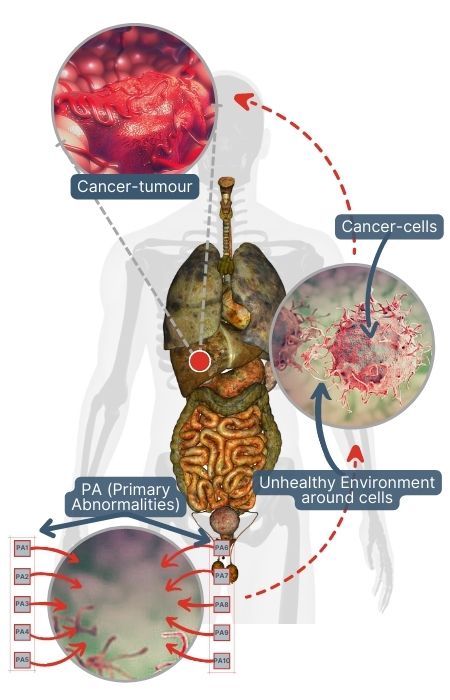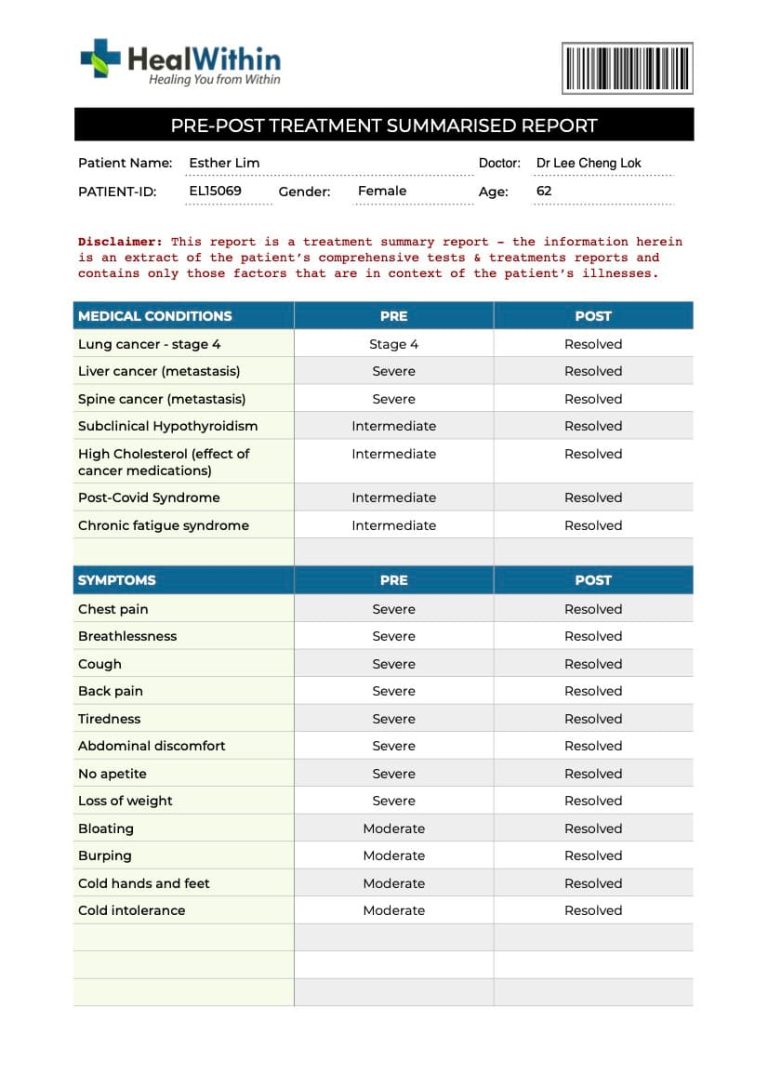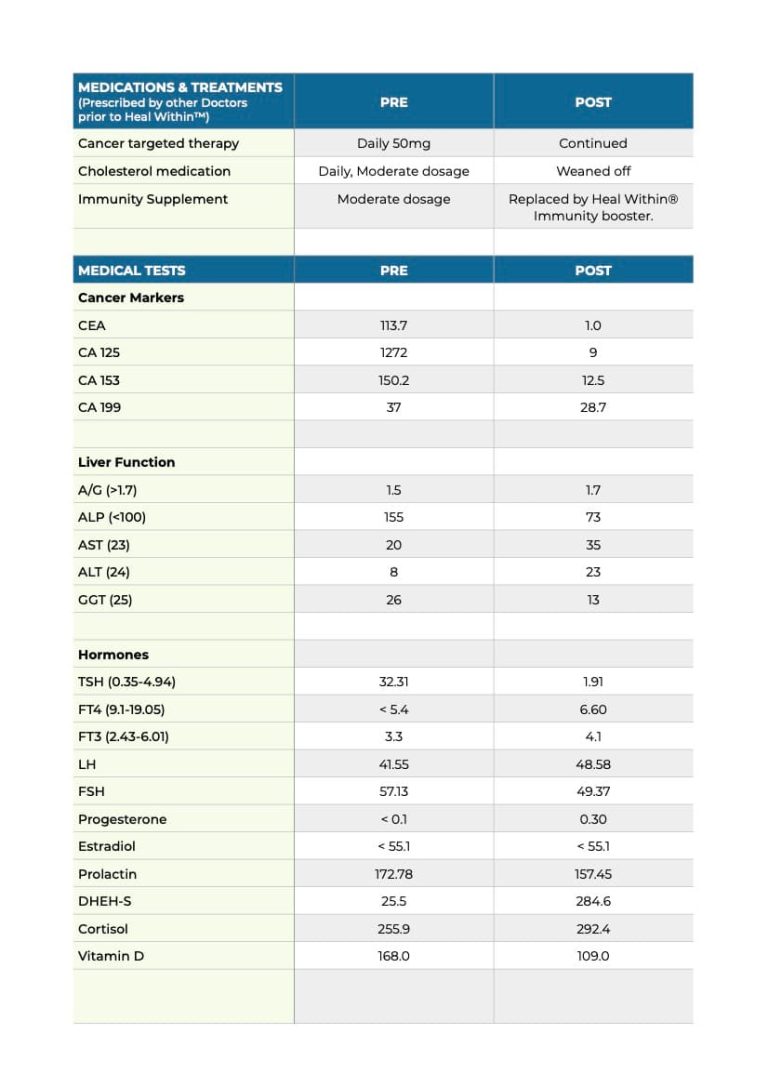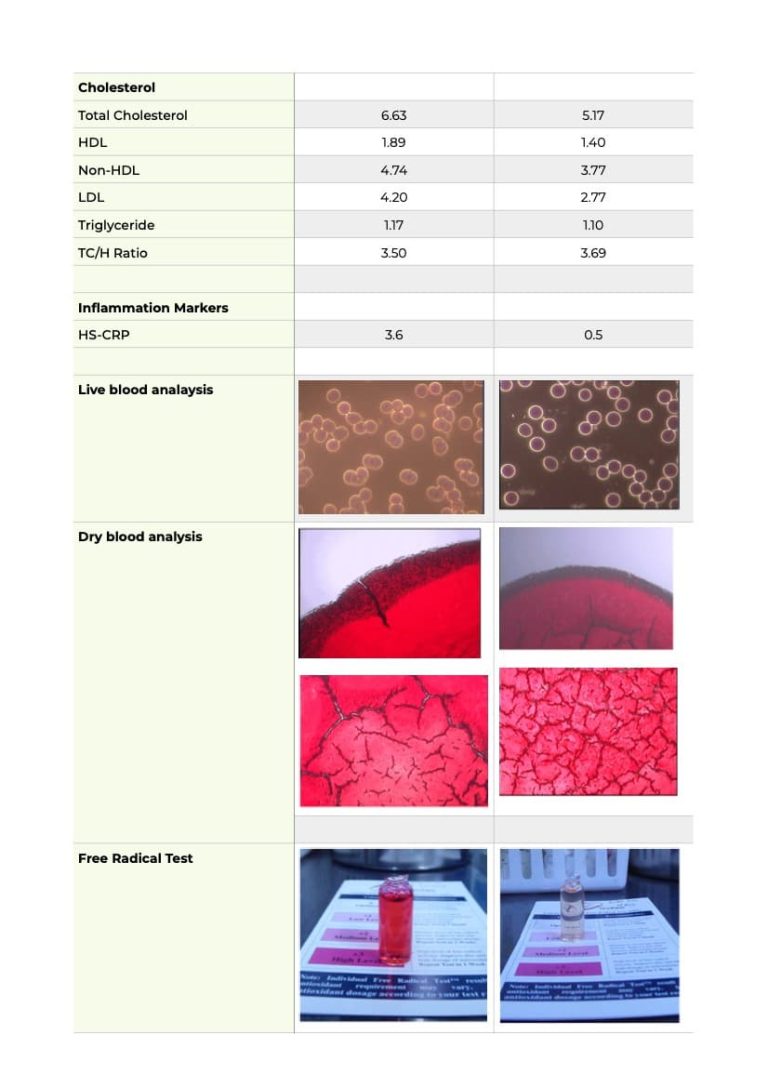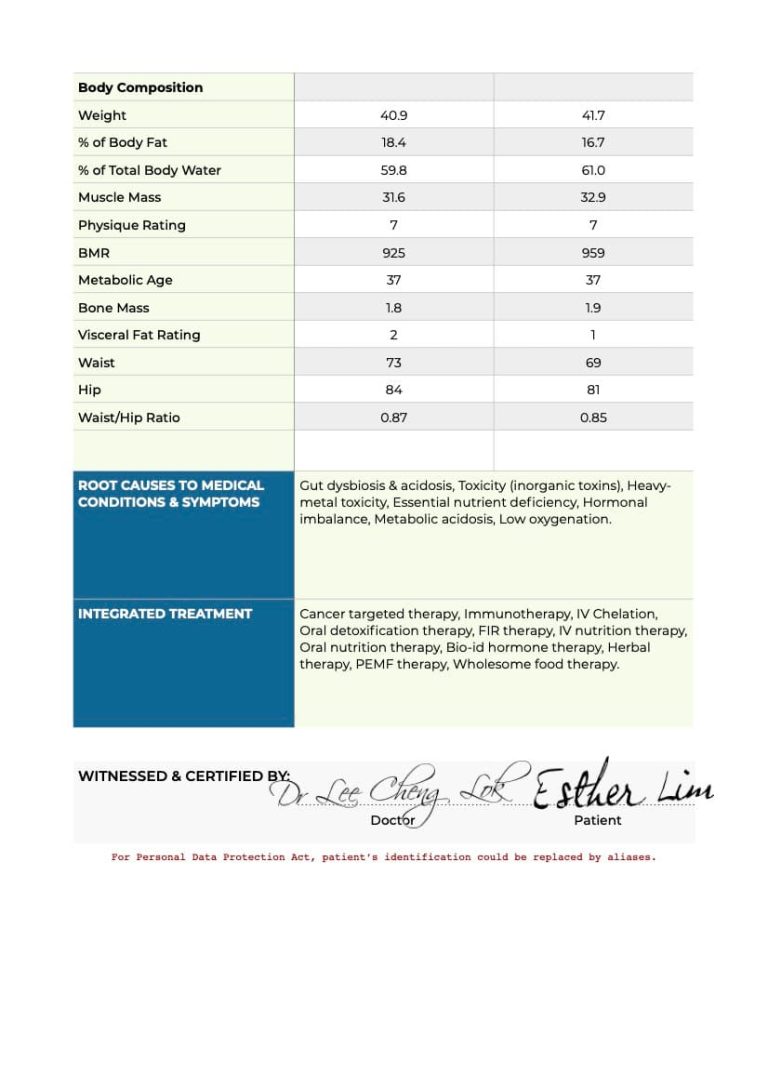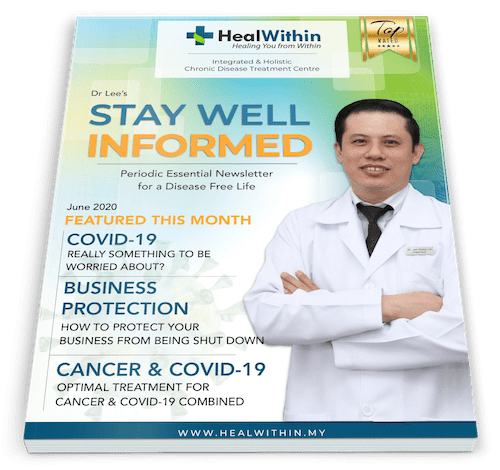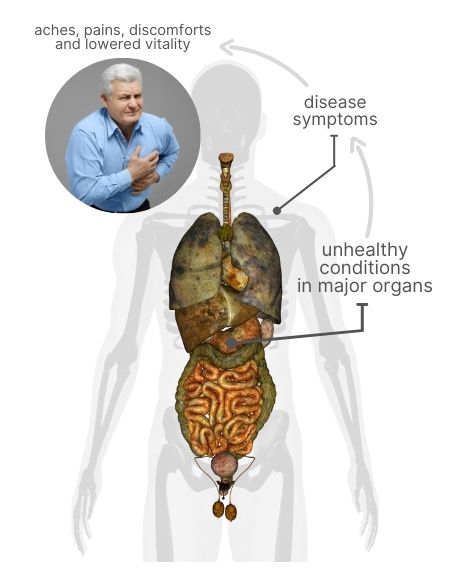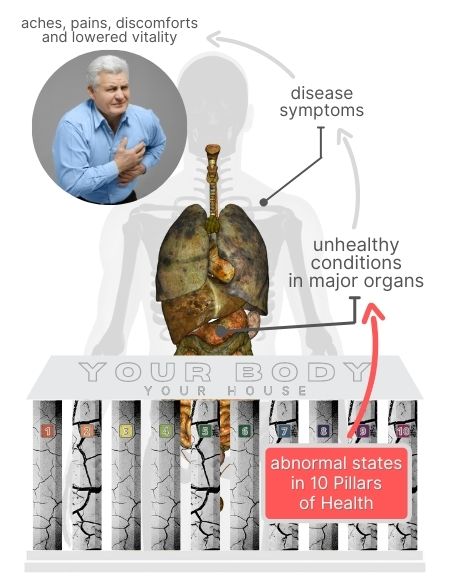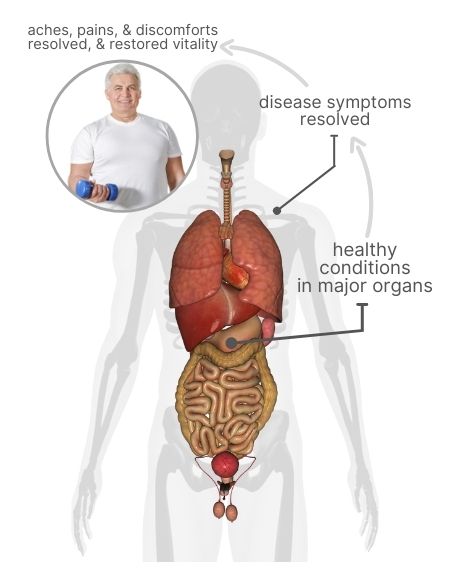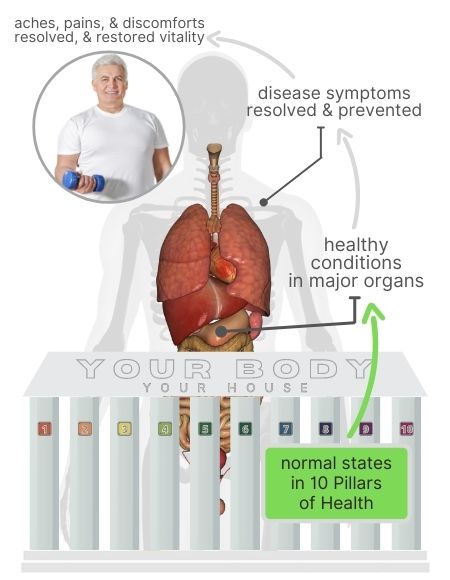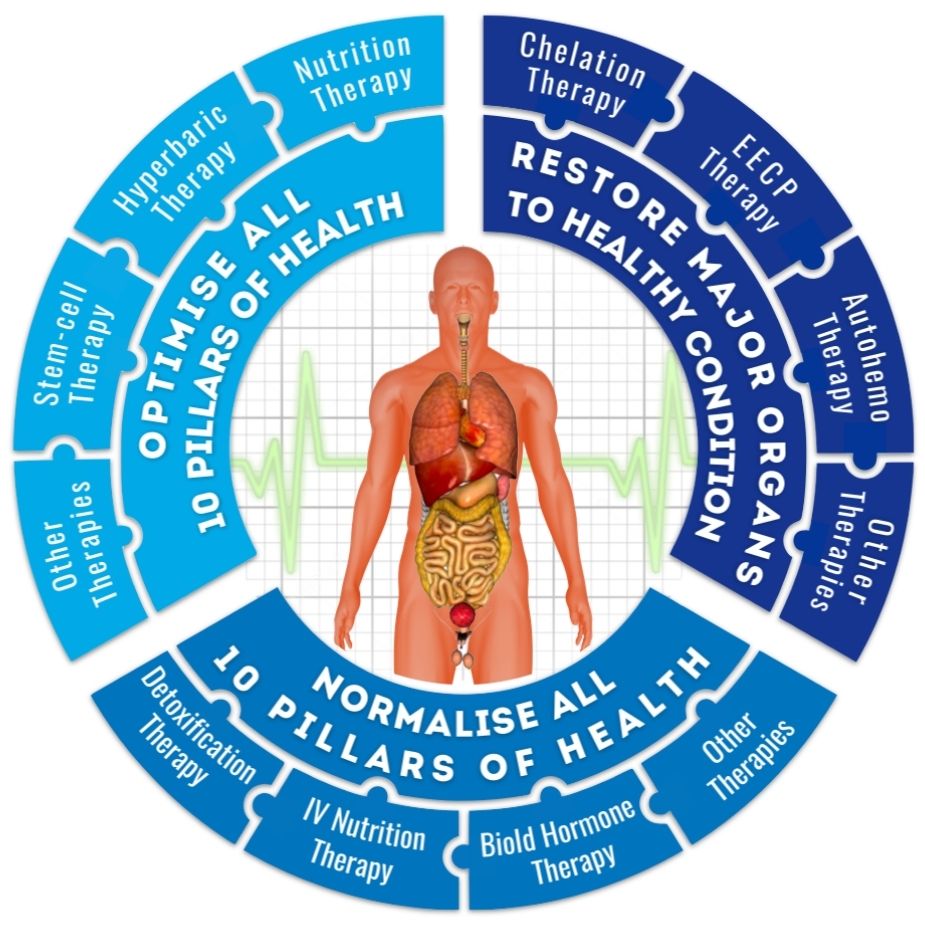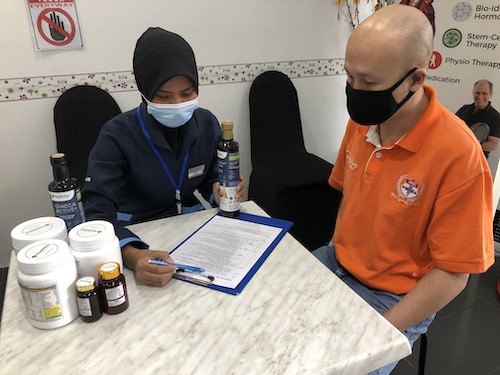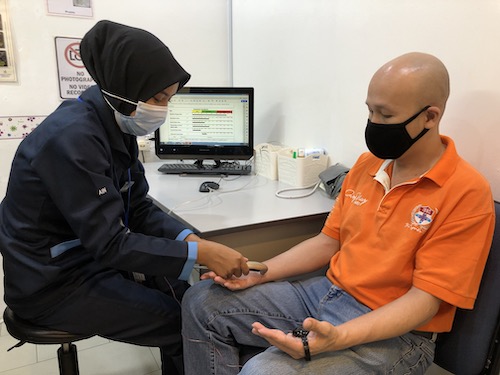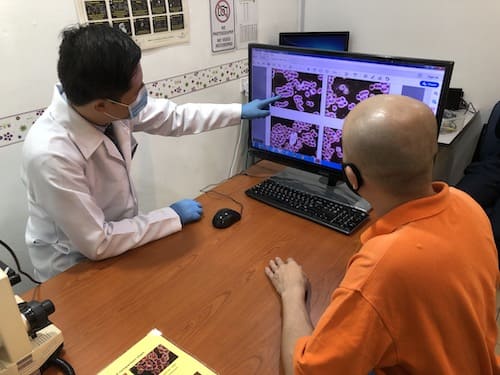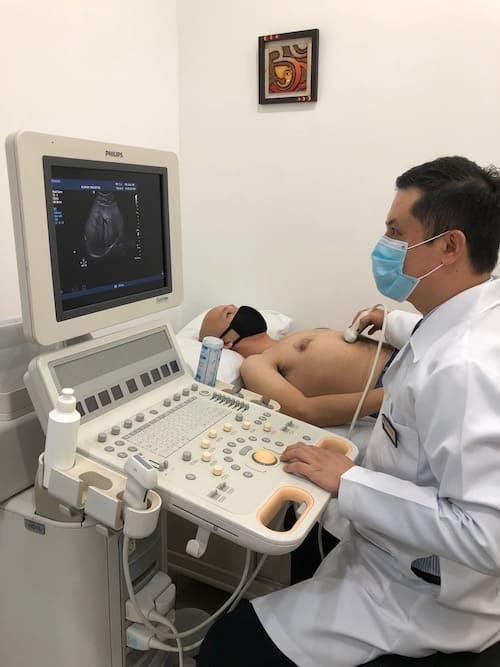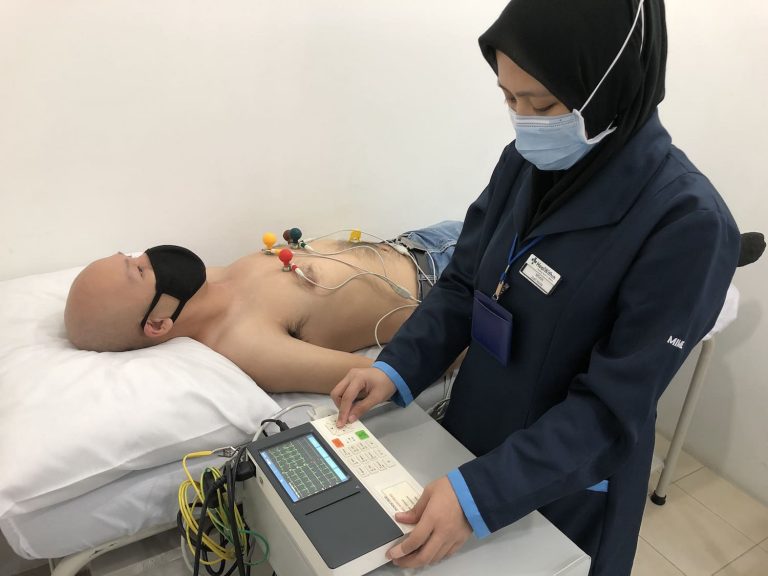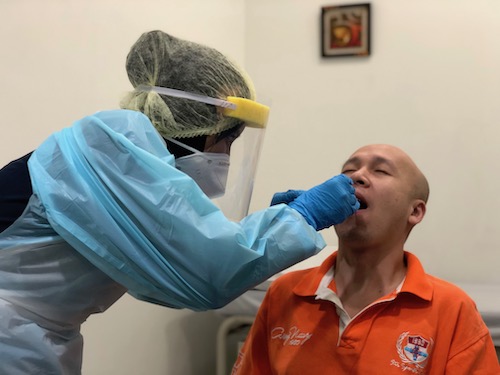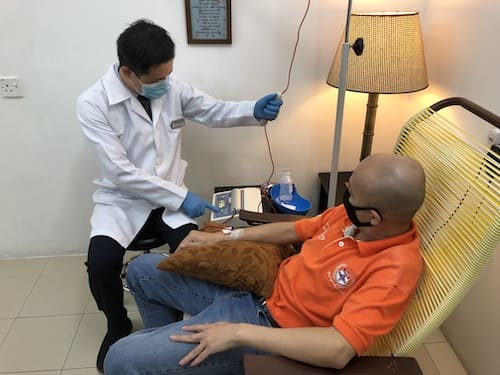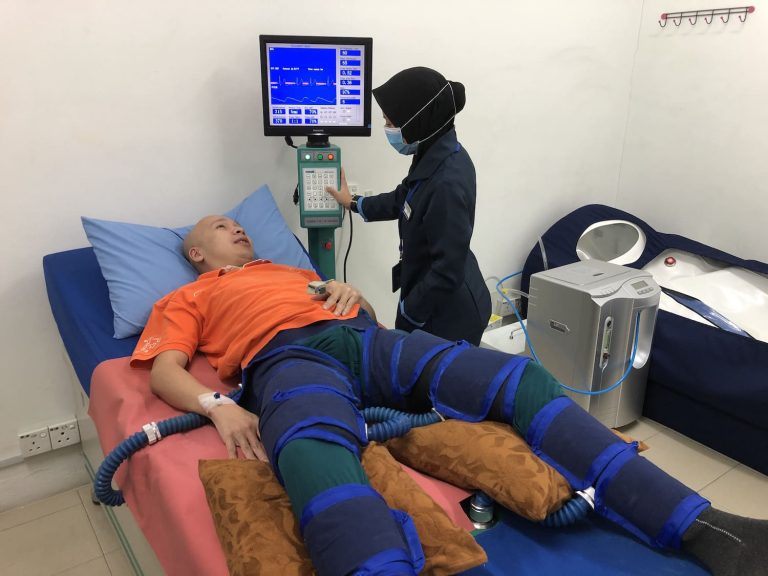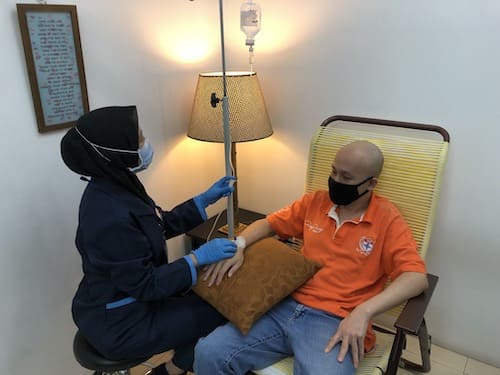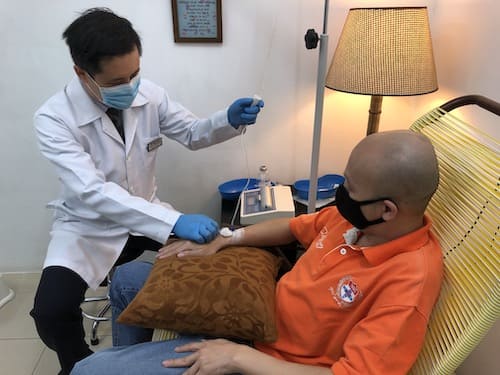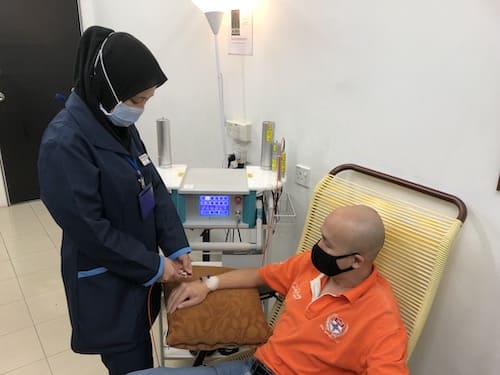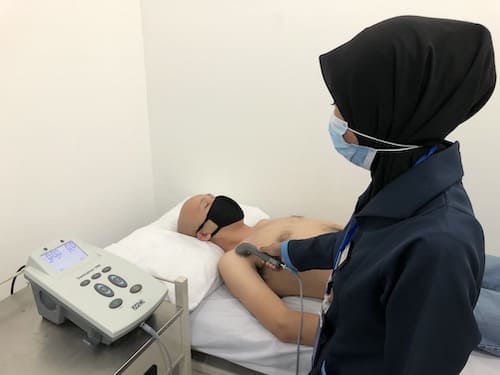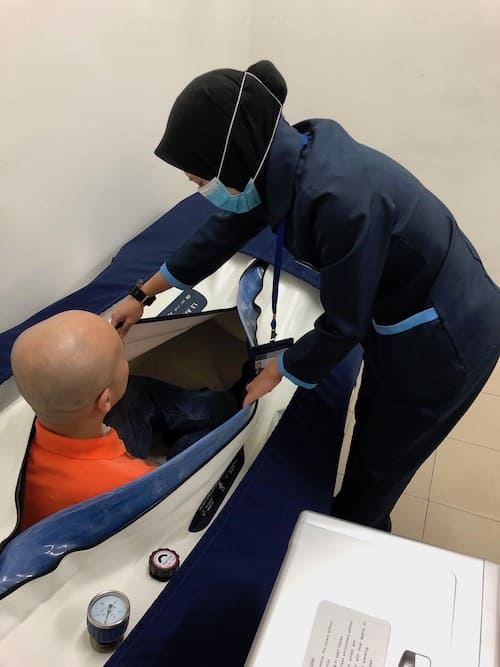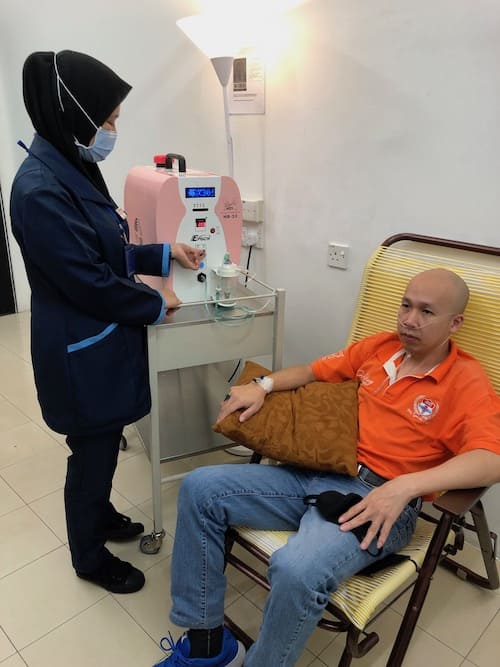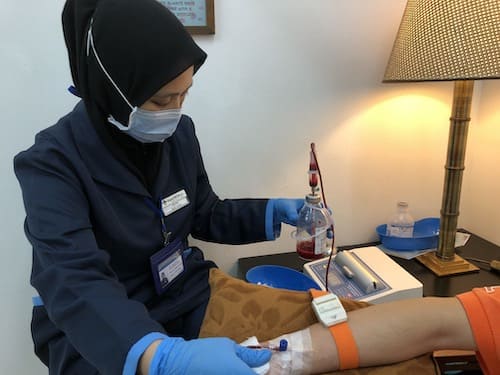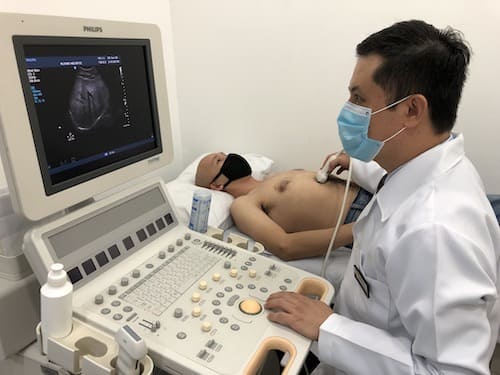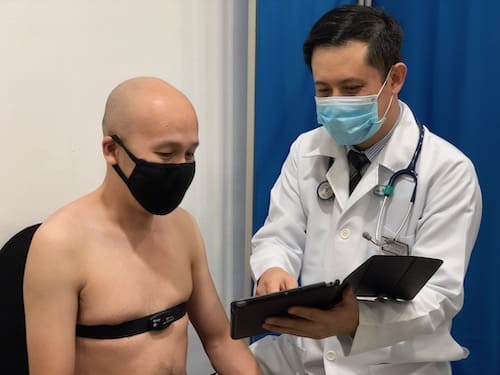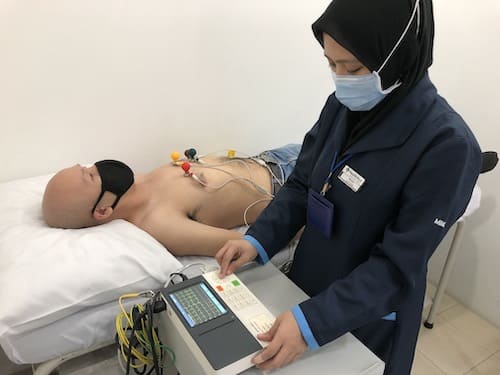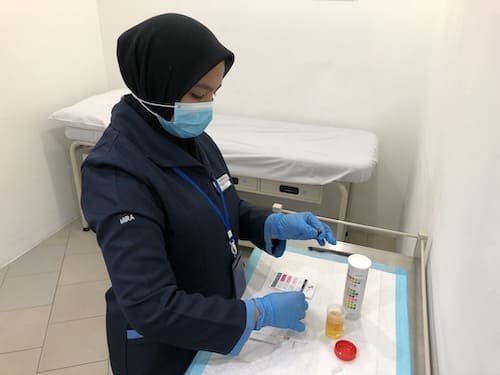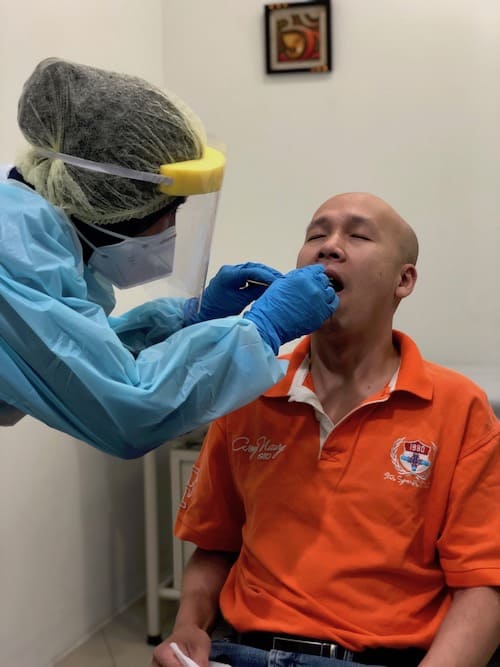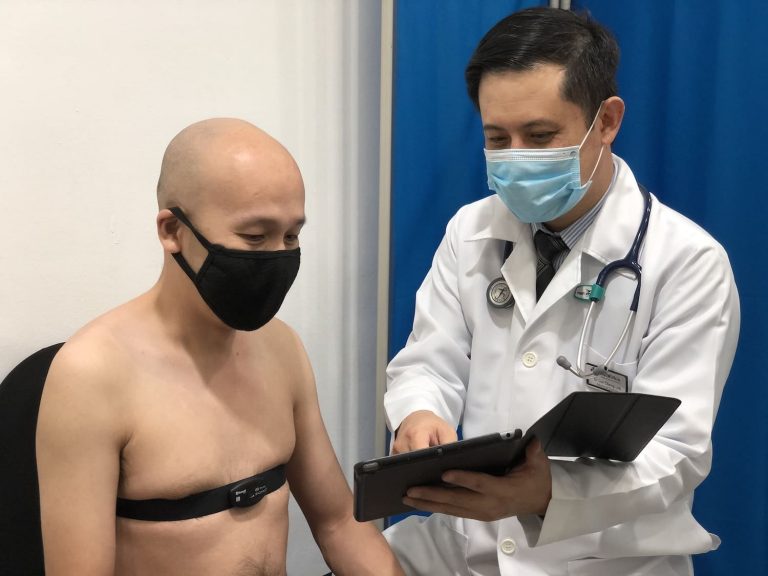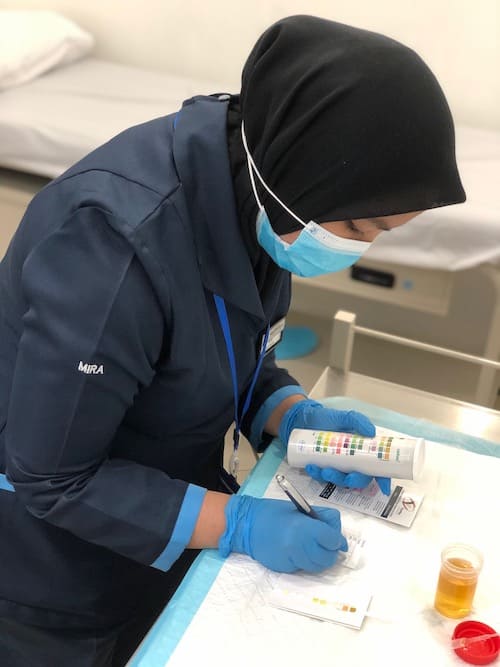Lung cancer, Liver cancer, Spine cancer, Hypothyroidism.. Successfully Treated by Integrated Treatment.

TESTIMONIAL DISCLAIMER: For complying with patient’s choice for anonymity and personal data protection, the patient’s name is replaced by an alias name, and face is concealed or alias images are used.
TREATMENT CASE SUMMARY
PRE-TREATMENT
Medical Conditions
- Lung cancer
- Liver cancer
- Spine cancer
- Hypothyroidism
Disease Symptoms
- Chest pain
- Breathlessness
- Cough
- Back pain
- Tiredness
- Abdominal discomfort
- No apetite
- Loss of weight
- Bloating
- Burping
- Cold hands and feet
- Cold intolerance
POST-TREATMENT
Medical Conditions
- Lung cancer - Resolved.
- Liver cancer - Resolved.
- Spine cancer - Resolved.
- Hypothyroidism - Resolved.
Disease Symptoms
- Chest pain - Resolved.
- Breathlessness - Resolved.
- Cough - Resolved.
- Back pain - Resolved.
- Tiredness - Resolved.
- Abdominal discomfort - Resolved.
- Loss of appetite - Resolved.
- Loss of weight - Resolved.
- Bloating - Resolved.
- Burping - Resolved.
- Cold hands and feet - Resolved.
- Cold intolerance - Resolved.
PATIENT TESTIMONY
DOCTOR
STAFF
PRICE
RECOMMENDED


PATIENT CASE DETAILS
PRE-DISEASE LIFESTYLE
Food
Vegetarian food, mostly asian style.
Nutrition
Standard multi-vitamins.
Exercise
Regular running, dancing, walking.
Environment
Typical city environment.
Rest
Normal rest and sleep.
Mind & Emotions
Mostly calm, occasional stress.
Periodic Detoxification
None.
Periodic Medical Screening
Yearly general checkups.
MEDICAL HISTORY
(Prior to treatment in Heal Within®)
🗓 – February 2014.
Symptoms: Lump on breast, Breast pain, Swollen lymph nodes.
Medical treatment at: Hospital.
Medical Diagnosis: Breast cancer.
Treatment administered: Breast mastectomy (surgery) with breast reconstructive surgery, Oral cancer-medication.
Result: Cancer in remission.
🗓 – July 2022.
Symptoms: Gastric pain, Bloating, Back pain, Chest pain, Cough, Breathlessness, Tiredness, Loss of appetite, Weight loss.
Medical treatment at: Hospital.
Medical Diagnosis: Lung cancer.
Treatment administered: Cancer targeted therapy.
Result: No improvement.
🗓 – October 2022.
Symptoms: Earlier symptoms worsened (Gastric pain, Bloating, Back pain, Chest pain, Cough, Breathlessness, Tiredness, Loss of appetite, Weight loss).
Medical treatment at: Hospital.
Diagnosis: Worsening of Lung cancer, Cancer metastasis to Liver, Cancer metastasis to Spine, Cancer metastasis to Lymph nodes.
Treatment administered: Patient chose to seek other treatment options.
Result: –.
🗓 – November 2022.
Symptoms: Earlier symptoms continued to persist (Gastric pain, Bloating, Back pain, Chest pain, Cough, Breathlessness, Tiredness, Loss of appetite, Weight loss).
Sought treatment at: Heal Within®.
Diagnosis: Read in full case details below.
Treatment administered: Read in full case details below.
Results: Read in full case details below.
WHY DID CANCER RECURR IN THE PATIENT?
(Prior to treatment in Heal Within®)
Because, the root causes to the patient's first occurance of cancer (breast cancer) were never treated & normalised by the cancer-treatments done in the past. (The root causes to the patient's cancer were still present in her body).
Even though the patient was administered cancer treatments in the past and her breast cancer was in remission a few years, the underlying root causes to her cancer were never treated & normalised by those cancer treatments done in the past; the underlying root causes being: (1) Gut disbiosys & acidosis; (2) Toxins & Heavy metals; (3) Lack of essential nutrients; (4) Hormonal imbalance; (5) Metabolic acidosis; and, (6) Low oxygenation.
In addition, the Sources (a.k.a. Primary Abnormalities) to the above root causes were not addressed. The Sources being: (1) Acidic diet; (2) Heavy-metal dental fillings which were gradually eroding; (3) Nutrient-deficient diet; (4) Mitochondrial dysfunction. (5) Medication.
The patient still had the underlying root causes their sources unaddressed, that is why she experienced a recurrence of cancer in other organs.
Even though the patient was administered cancer treatments in the past and her breast cancer was in remission a few years, the underlying root causes to her cancer were never treated & normalised by those cancer treatments done in the past; the underlying root causes being: (1) Gut disbiosys & acidosis; (2) Toxins & Heavy metals; (3) Lack of essential nutrients; (4) Hormonal imbalance; (5) Metabolic acidosis; and, (6) Low oxygenation.
In addition, the Sources (a.k.a. Primary Abnormalities) to the above root causes were not addressed. The Sources being: (1) Acidic diet; (2) Heavy-metal dental fillings which were gradually eroding; (3) Nutrient-deficient diet; (4) Mitochondrial dysfunction. (5) Medication.
The patient still had the underlying root causes their sources unaddressed, that is why she experienced a recurrence of cancer in other organs.
TREATMENT IN HEAL WITHIN®
PHASE 1: DIAGNOSIS
1. Vitality Factors
*100% represents optimal level for patients’s genetics, gender & age.
2. Disease Symptoms
- Chest pain
- Breathlessness
- Cough
- Back pain
- Tiredness
- Abdominal discomfort
- No apetite
- Loss of weight
- Bloating
- Burping
- Cold hands and feet
- Cold intolerance
3. Medical Conditions (Diseases)
- Lung Cancer
- Liver cancer (metastasis)
- Spine cancer (metastasis)
- Subclinical Hypothyroidism
- High Cholesterol (cancer medications side-effect)
- Post-Covid Syndrome
- Chronic fatigue syndrome
4. Causes & Root-causes to Medical Conditions
◉ Gut disbiosys & acidosis
What it is:
‘Gut Disbiosys’ is disruption to the gut-microbiome in the gut resulting in an imbalance in the microbiota, abnormalities in their metabolic activities & functions, and a shift in their local distribution. ‘Gut Acidosis’ is an over-acidification of the fluids in the gut.
Root-causes / Sources:
Acidic diet, Nutrient deficient diet, Gradually eroding heavy-metal in teeth fillings.
Mechanism:
1. Genotoxicity - Gut dysbiosis & acidosis can lead to the production of genotoxic compounds, such as nitrosamines and heterocyclic amines, which can damage DNA and promote carcinogenesis.
2. Systemic inflammation - Dysbiosis & acidosis of the gut microbiome can lead to systemic inflammation, which can promote the development and progression of cancer. Chronic inflammation plays an important role in the development of several forms of cancer, including lung cancer, liver cancer, and spine cancer.
3. Defective immunosurveillance - Gut dysbiosis & acidosis can disrupt pulmonary immune homeostasis, leading to increased cancer susceptibility in the lungs. Dysbiosis of the microbiota can activate the inflammatory pathway to trigger the proliferation and survival of epithelial cells under certain conditions, promoting the development of tumors.
4. Release of cancer-promoting bacterial metabolites - The dysbiosis & acidosis of microbiota may promote the development of lung cancer by releasing cancer-promoting bacterial metabolites.
5. Increased gut permeability - Gut dysbiosis & acidosis can lead to increased gut permeability, allowing bacterial products to enter the liver and promote inflammation. Chronic inflammation can contribute to the development of cancer.
◉ Toxins & Heavy-metals
What it is: ‘Toxins' are any substances and chemical compounds that basically cause hindrance or malfunction to normal body processes or cause damage to any organ. 'Heavy metals' are a group of metals & metalloids that have relatively higher density and are toxic to the body even at ppb (parts-per-billion) levels.
Root-causes / Sources: Gradually eroding heavy-metals in teeth fillings, Toxins in consumer-food items.
Mechanism:
1. Generation of free radicals and oxidative stress - Toxins & Heavy metals can generate free radicals that cause oxidative stress, which can damage biological molecules such as enzymes, proteins, lipids, and nucleic acids. This damage can lead to mutations in DNA, which is key to carcinogenesis.
2. Damage to DNA - Toxins & Heavy metals can damage DNA, which can lead to mutations and chromosomal aberrations that contribute to carcinogenesis.
3. Epigenetic modifications - Toxins & Heavy metals can induce epigenetic modifications, such as DNA methylation and histone modifications, which can alter gene expression and contribute to carcinogenesis.
4. Disruption of cellular signaling pathways - Toxins & Heavy metals can target signaling proteins or cellular regulatory proteins that participate in apoptosis, cell cycle regulation, DNA repair, DNA methylation, cell growth, and differentiation. By targeting these proteins, toxins & heavy metals can disrupt cellular signaling pathways and contribute to carcinogenesis.
5. Inhibition of DNA repair mechanisms - Toxins & Heavy metals can inhibit DNA repair mechanisms, which can lead to the accumulation of DNA damage and mutations that contribute to carcinogenesis.
6. Induction of inflammation - Toxins & Heavy metals can induce inflammation, which can contribute to carcinogenesis by promoting cell proliferation, angiogenesis, and tissue remodeling.
7. Alteration of gene expression - Toxins & Heavy metals can alter gene expression by binding to DNA or altering the activity of transcription factors, which can contribute to carcinogenesis.
◉ Metabolic acidosis
What it is: Metabolic acidosis is a condition where there is an accumulation of acid in the body, leading to a decrease in blood pH and decrease in systemic oxygenation.
Root-causes / Sources: Acidic diet, Eroding Heavy-metals in teeth fillings, Cumulative effect of other root causes.
Mechanism:
Metabolic acidosis is a condition characterized by an increase in the hydrogen ion concentration in the systemic circulation. Following are some of the mechanisms of how metabolic acidosis causes or contributes to the development of cancer:
1. Adaptation to acidosis - Cancer cells can adapt to the acidic environment by increasing intracellular pH (pHi), which renders several metabolic enzymes essential for survival, including GAPDH (glyceraldehyde 3-phosphate dehydrogenase). This adaptation to acidosis can promote cancer cell proliferation and survival.
2. Carbonic anhydrase IX (CAIX) - CAIX is a transmembrane protein that catalyzes the reversible hydration of carbon dioxide to bicarbonate and a proton. It is overexpressed in many types of cancer and is associated with metabolic acidosis. CAIX expression can promote cancer cell proliferation and survival by regulating intracellular pH and extracellular acidification.
3. Lactic acidosis - Lactic acidosis is a type of metabolic acidosis that occurs when there is an excess of lactate production or a decrease in lactate clearance. Lactic acidosis is commonly observed in cancer patients due to the Warburg effect, which is characterized by increased glucose uptake and lactate production even in the presence of oxygen. Lactic acidosis can promote cancer cell proliferation and survival by altering energy metabolism, redox homeostasis, and nutrient uptake.
4. Tumor microenvironment - The tumor microenvironment is characterized by metablic acidosis, and nutrient deprivation, which can promote cancer cell proliferation and survival. The acidic tumor microenvironment can also promote angiogenesis, invasion, and metastasis by activating proteases and modulating the extracellular matrix.
5. Immune suppression - The acidic tumor microenvironment (associated with metabolic acidosis) can suppress the immune response by inhibiting T cell function and promoting the expansion of regulatory T cells and myeloid-derived suppressor cells. This immune suppression can promote cancer cell proliferation and survival by evading immune surveillance.
◉ Essential-nutrients deficiency
What it is: Essential nutrient deficiency is low levels of one or more specific nutrients that are necessary for maintaining the condition and facilitating functions of organs in the body. Those nutrients can be within proteins, fats, vitamins, minerals, and salts.
Root-causes / Sources: Nutrient-deficient diet, Lack of full spectrum essential-nutrient supplementation.
Mechanism:
1. Vitamin B2 - Vitamin B2, also known as riboflavin, is involved in many cellular processes, including energy metabolism and DNA repair. Deficiency of vitamin B2 can lead to oxidative stress, which can damage DNA and increase the risk of cancer.
2. Vitamin B6 - Vitamin B6, also known as pyridoxine, is involved in many cellular processes, including amino acid metabolism and DNA synthesis. Deficiency of vitamin B6 can lead to impaired immune function and increased inflammation, which can contribute to the development of cancer.
3. Folate - Folate, also known as vitamin B9, is involved in DNA synthesis and repair. Deficiency of folate can lead to DNA damage and impaired DNA repair, which can increase the risk of cancer.
4. Vitamin C - Vitamin C is a powerful antioxidant that helps protect cells from oxidative stress. Deficiency of vitamin C can lead to increased oxidative stress, which can damage DNA and increase the risk of cancer.
5. Vitamin D - Vitamin D is involved in many cellular processes, including immune function and cell growth and differentiation. Deficiency of vitamin D can lead to impaired immune function and increased inflammation, which can contribute to the development of cancer.
6. Vitamin E - Vitamin E is a powerful antioxidant that helps protect cells from oxidative stress. Deficiency of vitamin E can lead to increased oxidative stress, which can damage DNA and increase the risk of cancer.
7. Calcium - Calcium is involved in many cellular processes, including cell signaling and DNA synthesis. Deficiency of calcium can lead to increased cell proliferation and impaired DNA repair, which can increase the risk of cancer.
8. Zinc - Zinc is involved in many cellular processes, including DNA synthesis and repair. Deficiency of zinc can lead to impaired immune function and increased inflammation, which can contribute to the development of cancer.
9. Selenium - Selenium is involved in many cellular processes, including DNA synthesis and repair. Deficiency of selenium can lead to increased oxidative stress and impaired DNA repair, which can increase the risk of cancer.
◉ Hormonal imbalance
What it is: Hormonal imbalance is simply a condition wherein there is either too much or too little of one or more hormones in the blood and in the interstitial-fluid environment in organs over extended periods of time.
Root-causes / Sources: Mitochondrial dysfunction, Acidic diet, Nutrient-deficient diet, Age progression.
Mechanism:
Hormonal imbalances have been extensively implicated in the development and progression of cancer. Below are the pathophysiological mechanisms of how hormonal imbalance causes or contributes to cancer:
1. Controlling the rate of cell division - Hormones, particularly estrogen and progesterone, can control the rate of cell division. For example, estrogen stimulates mitosis in the endometrium, while progestins oppose this effect. When there is an imbalance of hormones, such as an excess of estrogen, it can lead to uncontrolled cell division and the accumulation of genetic errors, which can eventually lead to cancer.
2. Differentiation of cells - Hormones can also affect the differentiation of cells. For instance, estrogen can promote the differentiation of breast cells, which can reduce the risk of breast cancer. However, when there is an imbalance of hormones, such as a deficiency of progesterone, it can lead to a lack of differentiation and an increased risk of cancer.
3. Number of susceptible cells to cancer - Hormonal imbalance can affect the number of susceptible cells to cancer. For example, Estrogen in the bloodstream can attach to hormone receptors in cancer cells, causing cancer cells to multiply and spread.
4. Chronic Inflammation - Chronic hormonal imbalance can cause chronic inflammation, which further causes hormonal imbalance and thereby increased inflammation, ultimately causing or contributing to the development of cancer.
◉ Low oxygenation
What it is: Hormonal imbalance is simply a condition wherein there is either too much or too little of one or more hormones in the blood and in the interstitial-fluid environment in organs over extended periods of time.
Root-causes / Sources: Mitochondrial dysfunction, Acidic diet, Nutrient-deficient diet, Age progression.
Mechanism:
Low oxygenation, or hypoxia, can contribute to cancer through several pathophysiological mechanisms. These mechanisms are discussed in detail below:
1. Alteration of gene expression - Hypoxia can alter gene expression in cancer cells, leading to changes in cell behavior and function. For example, hypoxia can activate oncogenes or inactivate tumor suppressor genes, leading to uncontrolled cell growth and proliferation.
2. Cancer cells proliferation and survival - Cancer cells can respond to hypoxia by eliciting cell survival or cell death, depending on the duration and severity of hypoxia. Hypoxia can promote cancer cell survival and proliferation by activating signaling pathways that promote cell growth and survival.
3. Angiogenesis - Hypoxia can stimulate the formation of new blood vessels, a process known as angiogenesis. This is because tumors require a blood supply to grow and survive, and hypoxia can trigger the release of growth factors that promote blood vessel formation connected to those tumors.
4. Metastasis - Hypoxia can promote cancer cell migration, invasion, and metastasis. This is because hypoxia can activate signaling pathways that promote cell motility and invasion, and can also alter the extracellular matrix to facilitate cancer cell migration.
5. Metabolic changes - Hypoxia can alter cancer cell metabolism, leading to changes in energy production and utilization. For example, hypoxic cancer cells tend to rely more on anaerobic glycolysis for energy production, which can promote tumor growth and survival.
PHASE 2: TREATMENT
The primary objectives of the treatment:
- Kill cancer cells, and shrink & dissolve Cancer-tumours.
- Treat all causes & root-causes to Cancer & other co-existing diseases, and thereby stop any on-going cancer activity, and prevent cancer & other disease recurrences.
- Optimise the condition and function of all organs.
No one therapy or treatment modality can help to achieve these three primary objectives; an integration (combination) of various therapies is necessary for this; and this is called an Integrated & Holistic Treatment.
The following therapies were strategically integrated and administered to the patient:
IV Chelation therapy
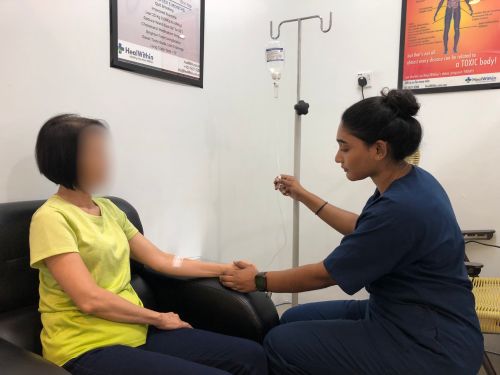
What it is: Specially formulated compound (called ‘chelator agent’) that is infused into the blood-stream of the patient intravenously. This chelator agent binds to toxic heavy metals like mercury, lead, etc. that are in various organs and tissues. The chelator agent & its concentration is chosen based on the patient’s body condition. Note: this is NOT chemotherapy.
Used for:
➤ Detoxification of Heavy-metals.
➤ Detoxification of Inorganic toxins.Effects:
➤ Shields biological targets from metal ions, reducing local toxicity.
➤ Removed free radicals, and reduces systemic oxidative stress.
➤ Reduced systemic inflammation.
➤ Prevention of further cellular damage and mytochondrial dysfunction.
➤ Helps to prevent hindrances to epigenetic mechanisms, prevent changes in gene expression, and prevent further cancer activity.
➤ Increased oxygenation to cells.
➤ Reduced side effects of conventional therapies.
➤ Supports immune system function.
➤ Provides recovery of altered biochemical variables.
➤ Improvement in function of all other organs and glands negatively effected by heavy metal deposits.
How its administered: Intravenously, in the clinic.
Detoxification therapy

What it is: Medication-based oral heavy-metal detoxification agents, together with a natural detoxification agents - Herbs, Essential nutrients, Essential fats, Essential salts, Antioxidants & alkalisers, Probiotics, and Enzymes. All these are strategically integrated and ingested by the patient orally.
Used for:
➤ Detoxification of organic toxins.
➤ Detoxification of inorganic toxins.
➤ Detoxification of some heavy-metals.
➤ Cleansing the gut & colon of acids, harmful bacteria, undigested debris of food, acids of food fermentation, toxic chemicals, inorganic food additives, etc..
➤ Cleansing the liver.
➤ Cleansing the blood.
➤ Supporting metabolic detoxification pathways, and modulate the processes of conversion and eventual excretion of toxins from the body.
Effects:
➤ Full detoxification of gut and colon.
➤ Full detoxification of liver.
➤ Full detoxification of blood.
➤ Full detoxification of tissue fluid in all organs and glands.
➤ Normalisation and improvement of the body’s natural detoxification mechanism.
➤ Alkalisation of the blood.
➤ Alkalisation of tissue fluid in the diseased organs and glands.
➤ Alkalisation of tissue fluids in all organs and glands in the body.
➤ Helps to prepare the internal environment for healing, repair and rejuvenation of cells in all organs, glands, and tissues effected by Cancer.How its administered: Orally, at home.
Immuno-Therapy

What it is: Natural immunotherapy is a type of cancer treatment that uses substances made by the body or in a laboratory to boost the immune system and help the body find and destroy cancer cells. There are different types of immunotherapy, including non-specific immunotherapies, cytokines, monoclonal antibodies, checkpoint inhibitors, and T-cell transfer therapy.
Used for:
➤ Stimulate the immune system.
➤ Induce production of Cytokines to facilitate immune cells production and function.
➤ Provide immune system antibody proteins (ex. monoclonal antibodies) to mark cancer cells so that the immune system will better recognize and destroy them.
➤ Induce T cells to fight cancer cells.
Effects:
➤ Activation of cancer specific immune cells, and optimisation of their function.
➤ Optimisation of overall immune system function.
➤ Optimisation of cancer-cells destruction.
➤ Normalisation of immune dysregulation.
➤ Optimisation of lymph system function.
➤ Enhanced systemic cellular detoxification.
➤ Reduction in systemic inflammation.
➤ Reduction in systemic oxidative stress.
➤ Induces healing, repair, and rejuvenation of cells in cancer affected organs and other diseased organs.
How its administered: Intravenously, in the clinic, and Orally at home.
IV Nutrition therapy
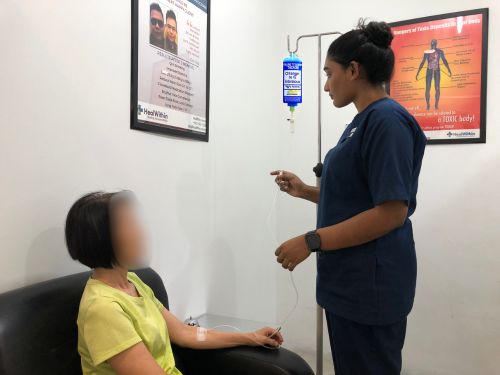
What it is: Essential nutrients isolated from herbs & sea-plants; and concentrated into infusion-fluids and administered intravenously.Used for:
➤ Fast restoration of some of essential nutrients in the blood and in the tissue fluid of all organs and glands.
➤ Normalise systemic pH levels.
➤ Provision of essential nutrients necessary for the body’s detoxification mechanism to function optimally.
➤ Increase absorption and bioavailability of rest of the essential nutrients administered orally.
Effects:
➤ Decrease in inflammation through suppression of cox-2 and nuclear factor κB.
➤ Enhanced gut and colon detoxification.
➤ Enhanced liver detoxification.
➤ Enhanced blood detoxification.
➤ Enhanced systemic cellular detoxification.
➤ Reduction in systemic inflammation.
➤ Reduction in systemic oxidative stress.
➤ Restoration of healthy gut microbiome.
➤ Increase absorption and bioavailability of rest of the essential nutrients administered orally.
➤ Normalisation of immune function and immune regulation.
➤ Normalisation of nervous regulation.
➤ Induces healing, repair, and rejuvenation of cells in cancer affected organs and other diseased organs.How its administered: Intravenously, in the clinic.
Oral nutrition therapy

What it is: Essential nutrients isolated from food, herbs & sea-plants; and concentrated into powder-capsules and liquids, and administered orally.
Used for:
➤ Replenishment of deficient essential nutrients.
➤ Restoration of all essential nutrients into the blood and tissue fluid of all organs and glands, and increasing their bio-availability to all cells in all organs and glands.
➤ Normalisation of systemic pH levels.
➤ Provision of essential nutrients necessary for the body’s detoxification mechanism to function optimally.
Effects:
➤ Reduction in systemic inflammation.
➤ Reduction in systemic oxidative stress.
➤ Restoration of healthy gut microbiome.
➤ Normalisation of immune function and immune regulation.
➤ Normalisation of nervous regulation.
➤ Normalisation of mitochondrial function.
➤ Normalisation of endocrine function.
➤ Normalisation of liver function.
➤ Induces healing, repair, and rejuvenation of cells in cancer affected organs and other diseased organs.How its administered: Orally, at home.
BioId Hormone therapy

What it is: Extracts from plant sources which are synthesised in labs to match the chemistry of hormones in the body.Used for:
➤ Replenishing the depleted hormones and thereby for the balancing the hormonal levels in the body.
➤ Induce normal function of all endocrine glands, and gradually self-replenish depleted hormones.
➤ Induce normal function of all diseased organs.
Effects:
➤ Elimination of cancerous cells’ access to hormones they need to grow.
➤ Prevention of production of abnormal hormones that can cause cancer.
➤ Proper Regulation of hormone receptors, for normalisation of endocrine system function.
➤ Optimisation of immune system function.
➤ Proper regulation of the body's circadian rhythms.
➤ Increased energy, and stabilisation in mood.
➤ Optimisation of necessary body processes including nutrition absorption, detoxification, homeostasis, immune function, tissue repair, cellular rejuvenation, etc.
➤ Induces healing, repair, and rejuvenation of cells in cancer affected organs and other diseased organs.
How its administered: Orally, at home.
F.I.R. therapy

What it is: FIR Therapy (Far-Infra-Red Therapy) is basically a chamber in which Far-infra red frequencies are resonated & propagated into the skin, muscles, and some major organs.
Used for:
➤ Mobilisation of the toxins & heavy metals in organs and glands, and to open up elimination channels to promote optimal detoxification.
➤ Increase nitric oxide production.
➤ Capillary dilation.
➤ Normalisation of mitochondrial function.
➤ Optimisation of the speed of progression of cells that repair damaged tissues.Effects:
➤ Inhibition of cancer cell proliferation.
➤ Activation of heat shock proteins (HSPs), which are involved in the regulation of cell growth and differentiation, and can help to prevent cancer activity.
➤ Activation of transcription factors, such as NF-κB, which help to prevent cancer activity.
➤ Optimal detoxification of gut, colon, liver, blood, and other major organs and glands.
➤ Reduction in systemic inflammation.
➤ Optimisation of blood circulation, and thereby nutrient distribution.
➤ Optimisation of metabolism.
➤ Optimisation of nervous regulation.
➤ Pain relief.
➤ Mental destress, and thereby emotional calmness.How its administered: FIR machine, in the clinic.
Herbal therapy

What it is: Extracts from various medicinal herbs, in the form of powder-capsules and liquids, to be administered orally.
Used for:
➤ Normalisation of gut microbiome, and improvement in gut and colon function.
➤ Normalisation in endocrine (hormonal) glads function and thereby to balance hormonal levels.
➤ Replenishment of essential nutrient complexes.
Effects:
➤ Normalisation of nervous regulation, and brain & nerves function.
➤ Normalisation of mitochondrial function, and metabolism.
➤ Normalisation of endocrine function, and restoration of balance in hormonal levels.
➤ Normalisation of liver function and cholesterol levels.
➤ Optimisation of nutrient absorption by cells in cancer affected organs, and other diseased organs & glands.
➤ Cellular rejuvenation in cancer affected organs, and in other diseased organs & glands.
➤ Induces healing, repair, and rejuvenation of cells in cancer affected organs and other diseased organs.
How its administered: Orally, at home.
PEMF therapy
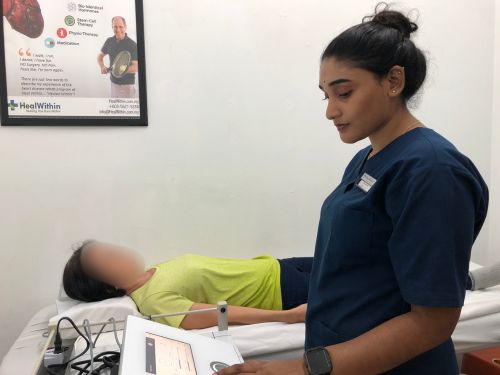
What it is: PEMF therapy stands for Pulsed Electromagnetic Field therapy, which uses electromagnetic fields to stimulate and exercise cells to help resolve cellular dysfunction and to support overall health. It is a non-invasive treatment that applies intermittent, current pulse-generated magnetic field pulses over a short time frame to treat various pathologies.
Used for:
➤ Normalisation of bio-resonance in cancer affected organs, and other diseased organs.
➤ Optimisation of bio-resonance in blood cells.
➤ Optimisation of bio-resonance in immune cells.
➤ Make cell membranes more permeable, for optimal absorption of nutrients.
Effects:
➤ Prevention of negative side effects of cancer drugs.
➤ Inhibition of proliferation of cancer cells.
➤ Addresses abnormal resonance in cancer cells, and thereby inhibits their function and prevents proliferation.
➤ Optimisation of immune cells function.
➤ Optimisation of cellular nutrient absorption.
➤ Selective destruction to cancer cells.
➤ Prevention of tumour growth.
➤ Induced shrinkage of tumours and reduction in size.
➤ Induced apoptosis in cancer cells.
➤ Reduction in systemic inflammation.
➤ Reduction in systemic oxidative stress.
➤ Optimisation of blood cells function.
➤ Induces healing, repair, and rejuvenation of cells in cancer affected organs and other diseased organs.
How its administered: PEMF machine, in the clinic.
Wholesome food therapy

What it is: Concentrated powder-form of a full spectrum of whole & organic foods, with omega-oil blends; combined with healthy & appetising meals.Used for:
➤ Replenishment of deficient essential nutrient-complexes in the diseased organs and all other organs and glands.
➤ Normalisation in the condition of tissue fluid in the diseased organs and all other organs and glands.
➤ Enhancement of bio-availability of essential nutrients.
➤ Normalisation of pH of the tissue fluids, and blood.
➤ Help the patient maintain a good diet, and prevent accidental consumption of toxic food substances.
Effects:
➤ Optimisation of absorption of essential nutrients administered through IV Nutrition therapy, into cells of diseased organs and all other organs and glands.
➤ Optimisation of absorption of essential nutrients administered through Oral Nutrition therapy, into cells of diseased organs and all other organs and glands.
➤ Optimisation of cellular detoxification.
➤ Optimisation of mitochondrial function.
➤ Optimisation endocrine (hormone gland) function.
➤ Optimisation of metabolism.
➤ Optimisation of immunity.
➤ Induces healing, repair, and rejuvenation of cells in cancer affected organs and other diseased organs.
How its administered: Orally, at home.
POST-TREATMENT TESTS & RESULTS
1. Vitality Factors
*100% represents highest optimal level for patients’s genetics, gender & age.
2. Disease Symptoms
- Chest pain | Resolved.
- Breathlessness | Resolved.
- Cough | Resolved.
- Back pain | Resolved.
- Tiredness | Resolved.
- Abdominal discomfort | Resolved.
- No apetite | Resolved.
- Loss of weight | Resolved.
- Bloating | Resolved.
- Burping | Resolved.
- Cold hands and feet | Resolved.
- Cold intolerance | Resolved.
3. Medical Conditions (Diseases)
- Lung Cancer | Resolved.
- Liver cancer (metastasis) | Resolved.
- Spine cancer (metastasis) | Resolved.
- Subclinical Hypothyroidism | Resolved.
- High Cholesterol (cancer medications side-effect) | Resolved.
- Post-Covid Syndrome | Resolved.
- Chronic fatigue syndrome | Resolved.
Pre-Post Treatment Summary Report
* These are in image format. Click/Tap each image to enlarge-view.
Pre-Post Treatment PET Scan Reports
* These are in multi-page PDF format. Scroll within each report to see all pages.
Pre-Treatment
Post-Treatment
Dr Lee's
Integrated & Holistic
C A N C E R
TREATMENT & SUPPORT
PROGRAM
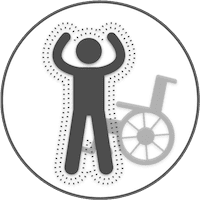
Holistic
Healing
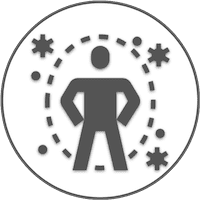
Recurrence Prevention

Long-term
Wellbeing

Brain cancer | Skin cancer | Lung cancer | Breast cancer | Stomach cancer | Liver cancer | Gallbladder cancer | Kidney cancer | Ovarian cancer | Pancreatic cancer | Cervical cancer | Prostate cancer | Colon cancer | Bone cancer | Lymphoma | Melanoma | and more…

